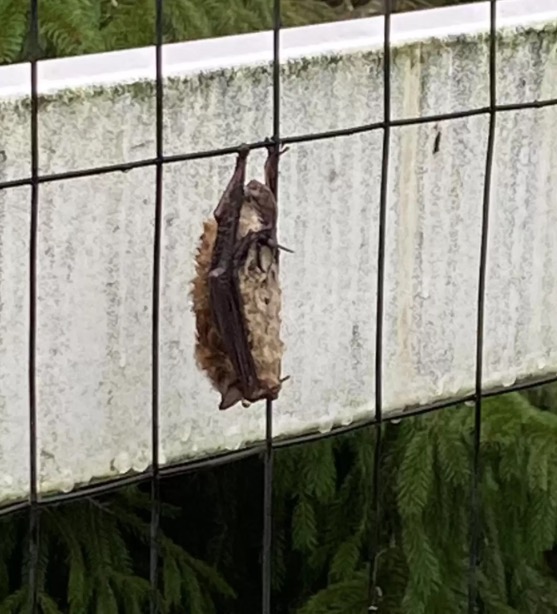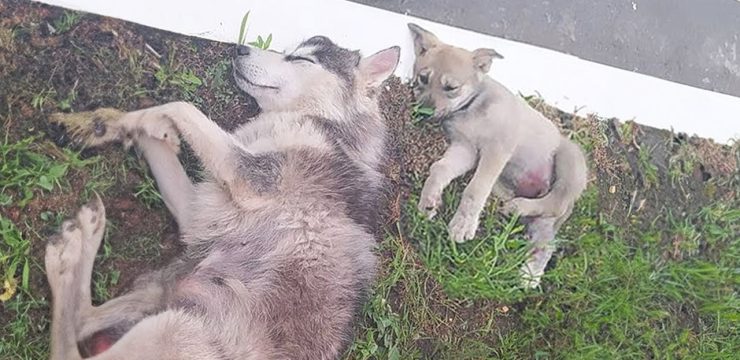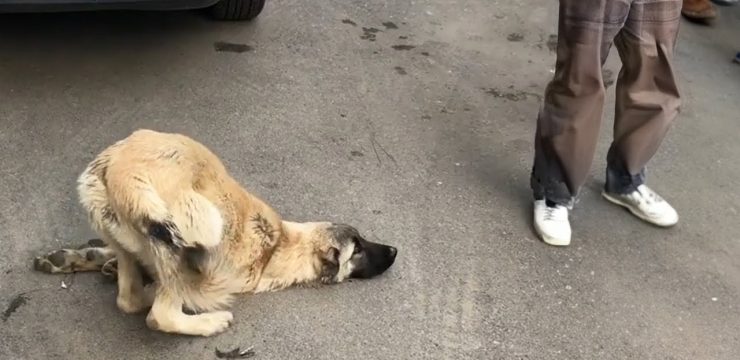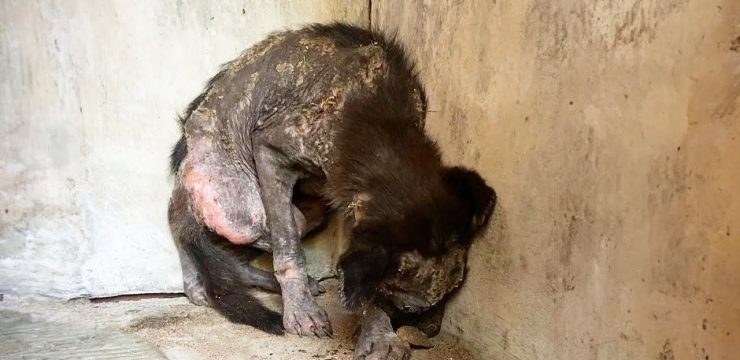She was cold, drenched, and barely holding on to life.
In the quiet town of Gilbertsville, Pennsylvania, a frail and elderly brown bat, later named Bea Arthur, was discovered in a heartbreaking state. Clinging to a metal fence, she was soaked to the bone, her tiny body trembling as she tried to survive in the open after a fierce storm had passed through. Vulnerable and exposed to predators, Bea had endured three long and lonely days out in the elements, with no shelter and no help in sight.

But just when things looked their bleakest, help finally arrived.
Stephanie Stronsick, the founder of Pennsylvania Bat Rescue, described the moment her organization was contacted: “The poor old girl was hanging on a metal fence in Gilbertsville, Pennsylvania, for three days,” she said. “She was found by the homeowner, who messaged us on Facebook after seeing her just hanging there in the open. She was exposed to predators, and she was absolutely drenched from the previous night’s storm.”
The rescue team responded immediately. With gloves on and hearts full of care, a trained volunteer carefully approached the fence and gently freed Bea from her cold, metal perch. She was fragile, but still breathing — a tiny survivor who clearly had some fight left in her. The team transported her directly to the sanctuary’s rehabilitation center, where her journey to healing could begin.
Once she was brought inside and allowed to dry off, Bea’s personality began to emerge. Though understandably timid at first, she soon revealed a quiet sweetness that endeared her to the staff. Upon closer examination, they discovered swelling in her head — most likely the result of trauma from the storm, possibly from being thrown into something by the high winds. This injury had caused some neurological symptoms, which made her movements a bit shaky and her responses slow.
But the staff didn’t give up on her. Bea was given the proper medication, warm shelter, and the time she needed to rest and recover. Slowly but surely, she began to improve. Her symptoms gradually lessened, and she gained strength each day. While she remained a bit shy, her gentle nature and quiet resilience touched everyone who cared for her.
Bea is a brown bat, a species native to North America and often misunderstood by the public. Despite their spooky reputation, bats like Bea play a vital role in maintaining healthy ecosystems. They are natural pest controllers, eating huge numbers of insects each night, and some species even contribute to pollination. Without bats, the balance of many ecosystems would be disrupted, making them essential contributors to environmental health.
Moreover, bats are incredibly social creatures. They communicate through complex sounds, form deep bonds, and thrive in communities. Many people don’t realize how intelligent and curious they are. Sadly, due to fear and misinformation, bats are often neglected or harmed when they are found injured or in distress. That’s why sanctuaries like Pennsylvania Bat Rescue are so crucial. They provide a safe haven for bats like Bea, who would otherwise be left to suffer alone.
Bea spent the entire winter at the rescue center, curled up in cozy blankets and resting in her favorite hammock. She was watched over with great care, and though she improved, the team had to make a difficult decision as spring approached. They conducted a full reassessment to determine if she could be released back into the wild, as is always their goal. But this time, things were different.
“She was our first senior bat who didn’t return to the wild,” the rescue team shared on their social media. Unlike the other older bats they had cared for in the past, Bea had simply been through too much. Her advanced age, compounded by the head trauma and lingering neurological effects, meant she could no longer forage or hunt well enough to survive in the wild. She wasn’t able to consume the volume of insects a healthy bat needs each night, and letting her go would have been a death sentence.
So, the decision was made to give her a permanent home at the sanctuary. She was officially retired from the wild and welcomed into a new chapter of her life — one filled with peace, companionship, and safety. At the sanctuary, she lived among other non-releasable bats, spending her days snuggled up in her favorite hammock, surrounded by others like her. It wasn’t the forest, but it was warm, calm, and filled with love.
Stephanie Stronsick and her team hope Bea’s story will inspire others to act with compassion when they see a bat — or any animal — in trouble. Her message is simple, but it carries tremendous weight: “Contact a licensed wildlife rehabilitator — don’t try to handle it on your own. That one call could save a life.”
Too often, people don’t know what to do when they find injured wildlife, and their hesitation or attempts to help without proper knowledge can do more harm than good. Wildlife rehabilitators are trained to care for animals safely and effectively, giving them the best chance at recovery and release. With just a phone call, you could be the reason an animal like Bea gets a second chance.
In the end, Bea’s story is more than just one bat’s survival. It’s a reminder of how every life — no matter how small or easily overlooked — is worthy of compassion, dignity, and care. From hanging on a fence in the freezing rain to resting peacefully among friends, Bea’s journey is a testament to the quiet strength of animals and the incredible difference that human kindness can make.
Because every creature deserves a warm place to heal, someone to stand by them, and hope when the world feels cold.





